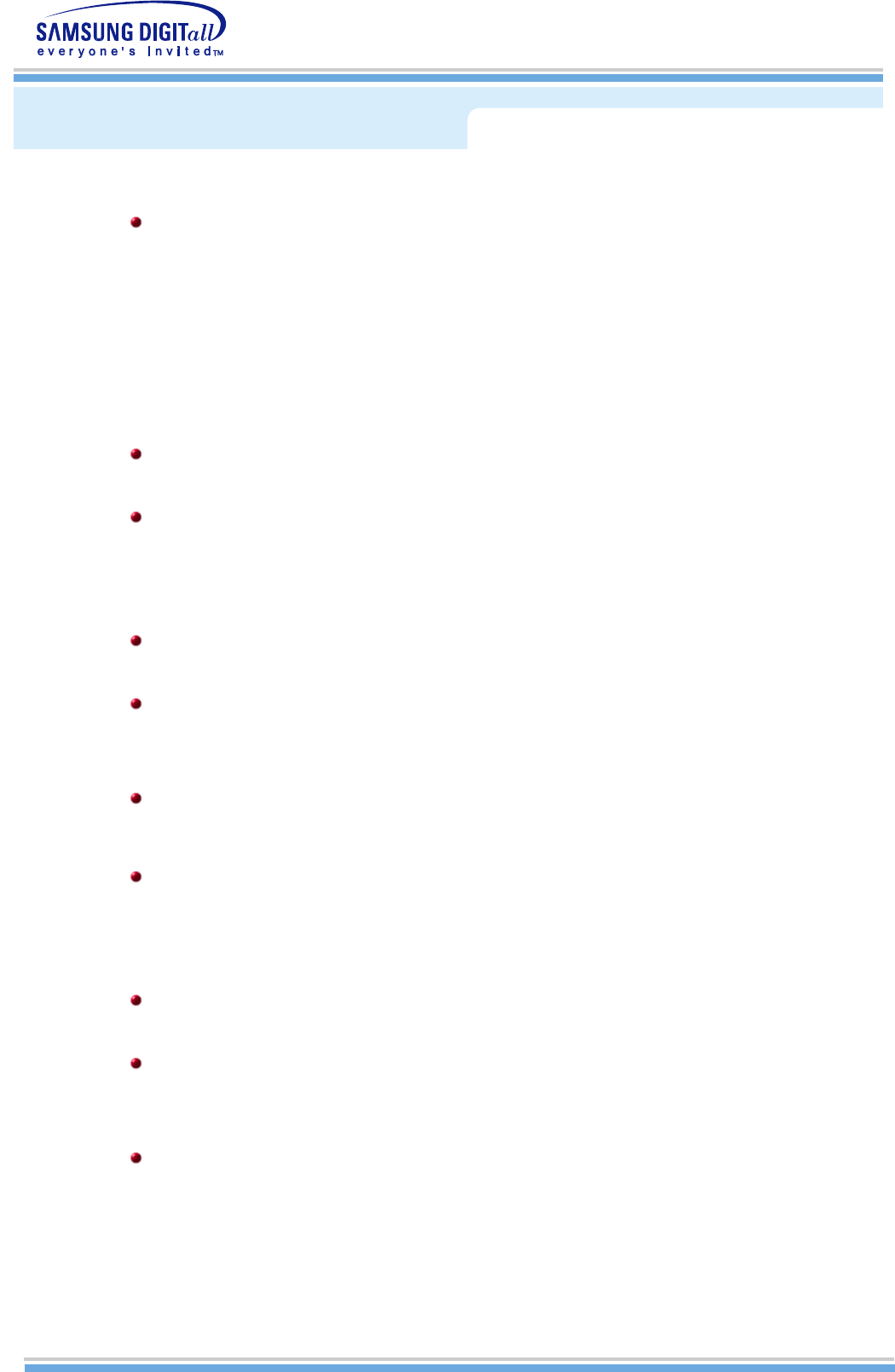
Sync Signal
Sync (Synchronized) Signals refer to the standard signals that are required to display desired colors on
the monitor. They are divided into Vertical and Horizontal Sync Signals. These signals display normal
color images by the set resolution and frequency.
Types of Sync Signals
Separate This is a scheme of transmitting individual vertical sync signals to the monitor.
Composite This is a scheme of combining vertical sync signals into one composite signal
and transmitting it to the monitor. The monitor displays the color signals by
separating the composite signal into original color signals.
Sync On Green This scheme does not use sync signals. Instead, it combines horizontal and
vertical sync signals into a Green signal and transmits to the monitor. It is mainly
used for workstations.
Dot Pitch
The image on a monitor is composed of red, green and blue dots. The closer the dots, the higher the
resolution. The distance between two dots of the same color is called the 'Dot Pitch'. Unit: mm
Vertical Frequency
The screen must be redrawn several times per second in order to create and display an image for the
user. The frequency of this repetition per second is called Vertical Frequency or Refresh Rate. Unit: Hz
Example:
If the same light repeats itself 60 times per second, this is regarded as 60 Hz. In this case,
flickering of the screen can be detected. To avoid this problem, there is a Flicker-free Mode
using a vertical frequency over 70 Hz.
Horizontal Frequency
The time to scan one line connecting the right edge to the left edge of the screen horizontally is called
Horizontal Cycle. The inverse number of the Horizontal Cycle is called Horizontal Frequency. Unit: kHz
Interlace and Non-Interlace Methods
Showing the horizontal lines of the screen from the top to the bottom in order is called the Non-Interlace
method while showing odd lines and then even lines in turn is called the Interlace method. The Non-
Interlace method is used for the majority of monitors to ensure a clear image. The Interlace method is
the same as that used in TVs.
Plug & Play
This is a function that provides the best quality screen for the user by allowing the computer and the
monitor to exchange information automatically. This monitor follows the international standard VESA
DDC for the Plug & Play function.
Resolution
The number of horizontal and vertical dots used to compose the screen image is called 'resolution'. This
number shows the accuracy of the display. High resolution is good for performing multiple tasks as more
image information can be shown on the screen.
Example:
If the resolution is 1024 X 768, this means the screen is composed of 1024 horizontal dots
(horizontal resolution) and 768 vertical lines (vertical resolution).
A2
This system uses two carriers to transmit voice data. Countries such as South Korea and Germany use
this system.
BTSC
Broadcast Television System Committee
The stereo broadcasting system that is used in most of the countries that have adopted the NTSC
system, including the United States, Canada, Chile, Venezuela and Taiwan. It also refers to the
organization that has been organized to promote its development and management.
EIAJ
Electronic Industries Association of Japan


















